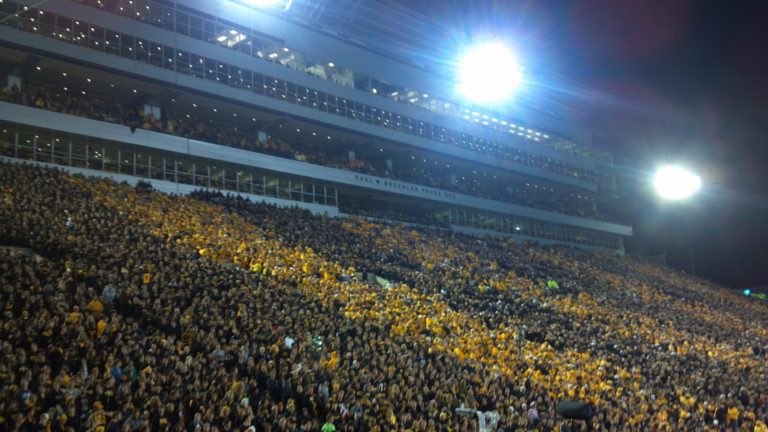Is there going to be a college football season at all in the 2020 calendar year due to the COVID-19 pandemic?
In my short answer: yes, there absolutely should be.
The time on the calendar that sports fans begin to set their sights on the upcoming college football season has been the debate that has been raging hot since the 4th of July holiday.
However, we can’t deny the reality of our current situation. National cases are on the climb, over 130,000 Americans have died from the virus and the closest vaccine is likely on hold until this upcoming winter. These are the facts.
The Ivy League has already made the decision to postpone all fall sports until spring, a move that makes sense for them as sports actually drain money from Ivy League schools. For Power 5 conferences, it is not as simple a decision.
Conferences such as the Big Ten and SEC have made football into a billion dollar business and their athletic departments rely on football to pay the bills for sports that lose money. In most cases, they are Olympic sports such as wrestling, track and field, soccer, etc.
Pushing the football season to spring isn’t a given. What if there is no clear decline in cases by the time spring semester arrives? What if the vaccine, that many people are banking on existing, isn’t here yet? There’s too many risks of the season being completely canceled to move the season to spring.
On Monday, Iowa State athletic director Jamie Pollard released an open letter to fans about what impact no football would have on the Iowa State athletic department. In his letter, Pollard states that the Cyclones athletic department would lose $40 million dollars of it’s athletic revenue if there is no football.
This means it’s probable that athletic programs will be cut within the Iowa State athletic program. This will happen all over the country at Power 5 programs without a football season. Kids that have come to universities for an athletic opportunity could have that dream snatched because of not playing due to a virus that has only killed 149 people that are 15 to 24 years old (As of July 8) in the United States.
My best friend from my hometown runs track and field at UNI along with his younger sister. The UNI men’s track and field program has 3 combined conference championships in indoor and outdoor track in the last 3 years, and is arguably the most successful athletic program at UNI in the past decade.
But he nearly didn’t have a program to run for, according to his coach. Track and field has continuously been brought up as a program that would likely be cut if UNI continues to suffer financial hardships in its athletic department. UNI athletics will be hurting even more if no football is played and the fact they lost their buy game with Iowa, which was a missed $650,000 payday.
With no football, the two options UNI has are this: either move it’s football program down to a Division I non-scholarship program (Similar to Drake), or cut more athletic programs. Judging by history, it’s very likely UNI chooses the latter.
The talk of moving football to spring would also affect track and field. If football is played in the spring, track and field would be moved to the fall of 2021. With athletes already preparing for the fall training season, that would mean a preparation period of an entire year before running a track meet.
By the time outdoor conference championships happen for track athletes, everyone is hanging on by a thread. Injuries become more and more common and everyone’s bodies are more than fatigued. Making them practice for a year before running another meet is absolutely crazy.
How is that fair to track and field athletes?
Another aspect to think about is the local economic impact, separate from the athletic departments. To use Iowa State as an example, it is estimated that the Ames area grosses an average $8.9 million every weekend of a home football game.
Plug Iowa City in that equation, the number is likely well over $10 million due to the higher volume of people that Iowa City holds on Saturday’s than Ames does with Kinnick having a capacity that is 7,750 higher than Jack Trice.
Now plug a city in that equation such as Columbus, Ohio, Ann Arbor, Michigan, Austin, Texas. That number doubles, triples, maybe even quadruples that of Iowa and Iowa State. These businesses in college towns make most of their money back from football weekends. It would be crippling to take that away from them.
This past weekend we saw our first football action since the country shutdown. Nebraska held their annual Shrine Bowl at the University of Nebraska-Kearney.
A crowd of nearly 2,500 people in a stadium that holds 6,500 people, and based on the information in the tweet above, Nebraska did show the sports world how football will be played with COVID-19. It can be done, and it can be copied and adjusted for stadiums that hold 100,000 people.
Even if games are played without crowds, the monetary blow will be great, but not as great as it would be without football at any capacity. No fans is better than no football.
There are a lot of people I expect to read this and quickly disregard it. I’m a 21-year old college student who probably appears as a “blogger boy”. I’m not an expert on the matter, nor will I ever be, and that is fine.
But, for those reading this with an open mind, all I ask is for you to take what I have talked about into consideration. Yes, people’s lives are at risk from this virus, but the ones who are playing the game make up 1/10th of one percent of all COVID deaths in the United States according to the CDC (.129 percent).
These student-athletes lives aren’t nearly as at-risk as their livelihoods are. I believe that is something worth speaking up and fighting for, to make sure these student-athletes in non-revenue sports are not left without a team to compete for.




